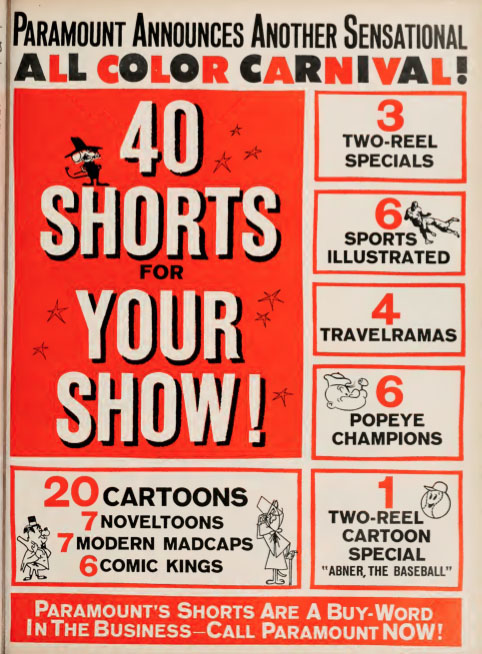
Not sure why “Gramps” and “The Cat” are featured in this 1961 trade publicity piece – but they are.
At first glance, the 1961-62 season might look pretty low-key, but things at the studio were hopping. Paramount put up the money to produce 14 new theatrical shorts – actually, it came out as 12 six-minute shorts and 1 twelve-minute “two-reeler”. The studio was a able to release 21 new cartoons due to an arrangement with King Features that gave the gave the studio six additional releases, plus a new alliance with Gene Deitch and William Snyder (Rembrandt Films) which yielded two additional shorts.
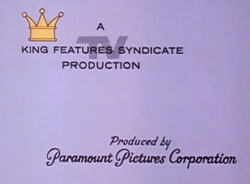 King Features Syndicate, flush from the success of the TV Popeye cartoons they were producing, decided to syndicate a package of 150 new cartoons – 50 each of Snuffy Smith, Krazy Kat and Beetle Bailey (there was talk of adding Gene Deitch’s Sampson Scrap to the mix – that was scuttled, though Paramount released the 1960 pilot film theatrically in March 1962).
King Features Syndicate, flush from the success of the TV Popeye cartoons they were producing, decided to syndicate a package of 150 new cartoons – 50 each of Snuffy Smith, Krazy Kat and Beetle Bailey (there was talk of adding Gene Deitch’s Sampson Scrap to the mix – that was scuttled, though Paramount released the 1960 pilot film theatrically in March 1962).
Though the pilots for these series were animated elsewhere, much of the work on the King Features Trilogy was farmed to Paramount. Interesting to note the pilot for Beetle Bailey (“Labor Shortage“) was produced by Don Oriolo and Pat Sullivan(!!??) and directed by Steve Muffatti; with the pilots for Snuffy Smith (“Snuffy’s Turf Luck“) and Krazy Kat (“Housewarning“) produced in LA by Format Films – directed by Jack Kinney.
Snuffy Smith had, of course, been the subject of a 1946 Noveltoon, so his return to Paramount was something of a homecoming. Krazy Kat had been distributed by Paramount back to the 1920s, so this was somewhat a return to the fold as well. It was decided early on – with the prime time success of The Flintstones, and a new-wave of animated sitcoms – to hire a pair of sitcom writers, Michael Ross and Bruce Howard to created a half hour Snuffy Smith “pilot” that could be broken into three shorts if necessary.
Apparently it was necessary – those three parts, animated by Paramount, were released theatrically as separate shorts (and subsequently added to the King TV package). If you watch them in order – Snuffy’s Song, The Method and Maw, and The Hat – you can see how they hook up. (For some reason, The second one, The Method and Maw, was released out of order, relegated to the next season’s releases).
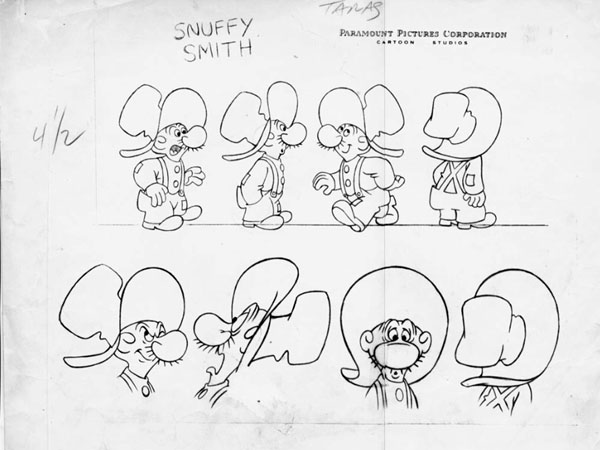
For those keeping score, Harvey Comics package of previously-Paramount cartoons (aka Matty’s Funday Funnies) was cancelled from the network in late 1961 (to be replaced by new Bob Clampett Beany and Cecil cartoons in the fall of 1962). ABC Films immediately put the cartoons on the syndication market – where they remained for the next 30 years. Paramount’s Cartoon Department kept busy creating several variations of the Harvey jack-in-the-box opening ID that were tagged to each syndication print.
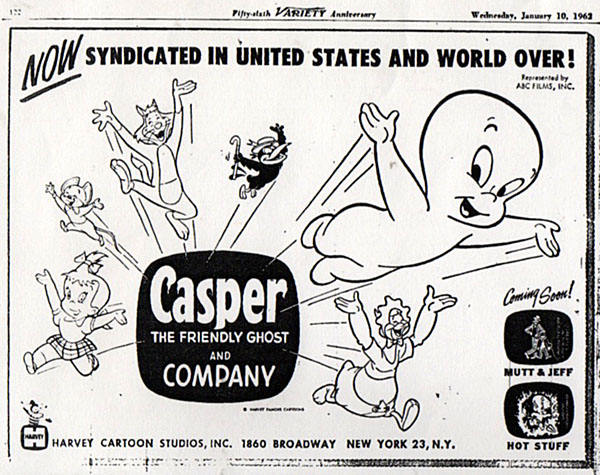
Interesting ABC Films trade ad from early 1962 touting “Casper and Company” now in syndication. “Mutt and Jeff” and “Hot Stuff”? Was Harvey considering making TV cartoons with them?
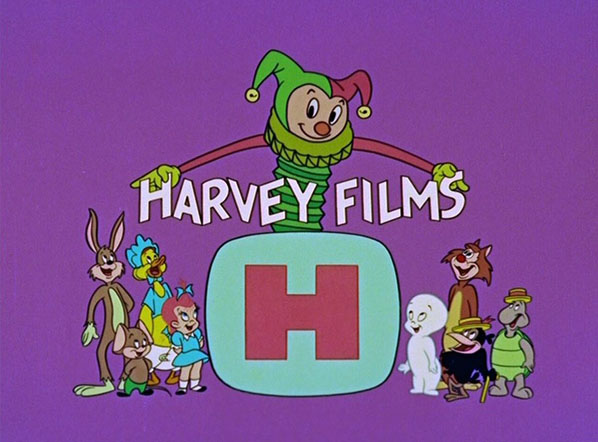
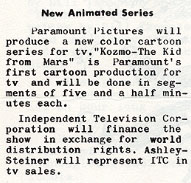
This item appeared in the Dec. 1961 Pegboard, the NY Screen Cartoonists newsletter.
The biggest addition to the theatrical crew was the addition of comedian, voice man and writer Eddie Lawrence. Apparently Lawrence’s Old Philosopher monologue was a huge hit with Seymour Kneitel (Full Disclosure: I too am a big fan of Eddie Lawrence). Lawrence began showing up in the Paramount cartoons last season and was a natural fit.
Kneitel invited Lawrence to contribute stories and write scripts, adapting several of his comedy routines and vocal characterizations to animation. Two characters he had developed on his comedy records were “Percy” and “Ralph” (two years later these characters would become known as Swifty and Shorty). Kneitel’s biggest coup at this time was getting Paramount to buy the screen rights to Lawrence’s 1958 recording Abner The Baseball – and adapting it (via Irv Spector) to a double length cartoon special.
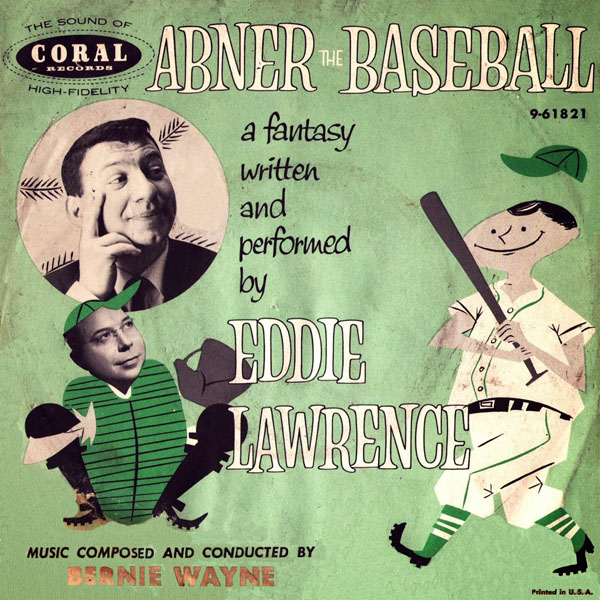
The original recording was released as a single in 1958.
Let’s take a closer look at the cartoons:
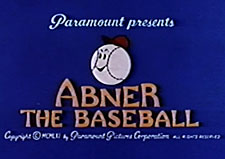 Two-Reel Special
Two-Reel Special
ABNER THE BASEBALL (11/61) Kneitel/Ehret. Abner recounts his experiences that led him to be placed in the Baseball Hall of Fame.
Seven (7) Noveltoon cartoons
TURTLE SCOOP (10/61) Kneitel/Tafuri. Photo-journalists Tommy Tortoise and Moe Hare have to get a picture of a missile launching pad – or they will get fired.
KOZMO GOES TO SCHOOL (11/61) Kneitel/Tafuri. Spaceman Kozmo is picked up by a truant officer and sent to school – where he does battle with a bully.
PERRY POPGUN (1/61) Kneitel/Reden. Private-Eye Perry Popgun decides to visit his girlfriend, a nightclub singer named Goldie, who is involved with three suspicious bears.
WITHOUT TIME OR REASON (1/62) Kneitel/Taras. Crooked jeweler Ralph tries to sell Percy a timepiece.
GOOD AND GUILTY (2/62) Kneitel/Reden. Goodie the Gremlin is on trial for doing good deeds.
TV OR NOT TV (3/62) Kneitel/Spector. Ralph is a crooked TV repairman who swindles Percy with his lousy service.
ANATOLE (9/62) Gene Deitch. Anatole the mouse becomes taste-tester and a vice-president of the cheese factory.
Seven (7) Modern Madcap cartoons
THE PLOT SICKENS (12/61) Kneitel/Spector. Myron (Eddie Lawrence) plots to kill his fat, ugly wife.
CRUMLEY COGWHEEL (1/62) Kneitel/Reden. Meek employee Crumley has worked for the same company for 20 years without asking for a raise. The boss gives him a week to work up the courage to ask for one – or get fired.
POPCORN AND POLITICS (2/62) Kneitel/Taras. Spec’s imagines what it would be like to be the President.
GIDDY GADGETS (3/62) Kneitel/Tafuri. Professor Schmaltz (channeling Grampy) creates a series of inventions meant to help his wife do her households chores – but instead drives his wife crazy.
HI-FI JINX (3/62) Kneitel/Taras. Percy buys a hi-fi kit and his neighbor Ralph helps him build it.
FUNDERFUL SUBURBIA (3/62) Kneitel/Tafuri. The trials and tribulations of a modern suburban settler.
SAMPSON SCRAP (3/62) Gene Deitch. Sampson and his friends look for junk to build a bridge between two apartment buildings.
Six (6) Comic King cartoons
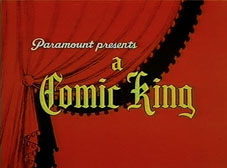 FROG’S LEGS (4/62) Kneitel/Tafuri. Tubby and Lulu decide to catch a bunch of frogs to sell to a French restaurant.
FROG’S LEGS (4/62) Kneitel/Tafuri. Tubby and Lulu decide to catch a bunch of frogs to sell to a French restaurant.
HOME SWEET SWAMPY (5/62) Kneitel. The General orders Beetle Bailey and Sarge to take a furlough off the base.
HEROES REWARD (5/62) Kneitel/Tafuri. When Campy Swampy conducts war games, Beetle and Zero wind up capturing the whole base.
PSYCHOLOGICAL TESTING (6/62) Kneitel/Reden. Privates Beetle Bailey, Zero, Cosmo, Rocky and Sgt. Snorkel go through a series of psychological tests.
SNUFFY’S SONG (6/62) Kneitel/Pattengill. Snuffy, Barney and Loeezy head for the city to record Snuffy’s theme song.
THE HAT (6/62) Kneitel/Taras. Still stuck in the city, Snuffy is tricked into robbing a bank – and becomes a wanted outlaw known as “The Hat”.
(Thanks Ken Layton, Mike Kazaleh, Paul Spector)



 Jerry Beck is a writer, animation producer, college professor and author of more than 15 books on animation history. He is a former studio exec with Nickelodeon Movies and Disney, and has written for The Hollywood Reporter and Variety. He has curated cartoons for DVD and Blu-ray compilations and has lent his expertise to dozens of bonus documentaries and audio commentaries on such. Beck is currently on the faculty of CalArts in Valencia, UCLA in Westwood and Woodbury University in Burbank – teaching animation history. More about Jerry Beck [
Jerry Beck is a writer, animation producer, college professor and author of more than 15 books on animation history. He is a former studio exec with Nickelodeon Movies and Disney, and has written for The Hollywood Reporter and Variety. He has curated cartoons for DVD and Blu-ray compilations and has lent his expertise to dozens of bonus documentaries and audio commentaries on such. Beck is currently on the faculty of CalArts in Valencia, UCLA in Westwood and Woodbury University in Burbank – teaching animation history. More about Jerry Beck [



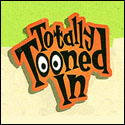



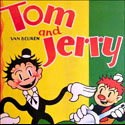
Jerry:
Interesting toon (I always liked Eddie Lawrence)but was there supposed to be an ad inside the toon?There was when I played it…Just asking,though with the tv intro,it sirangely felt almost normal to interrupt the toon with an ad
“Popeye Champions” reissues were back for the 1961-62 season, but the “Cartoon Champions” were retired, meaning Popeye got the reissue market for Paramount cartoons all to himself.
1) “Fireman’s Brawl”
2) “Toreadorable”
3) “Popeye, the Ace of Space” [in 2-D]
4) “Shaving Muggs”
5) “Taxi Turvy”
6) “Floor Flusher”
I had never seen (the 40s’) Snuffy film….how can I do that??
Get in line behind me!
All that is known about the “lost” Famous Studios Snuffy Smith cartoon is in the post I wrote and linked to above. However there is an update – the film has been supposedly found at an archive overseas. Interested parties are attempting to procure a screening in the near future. That’s all I can say for now – stay tuned. 😉
Antole was also part of Gene Dietch’s animated masterpiece Alice in Paris as Alice’s mouse guide.
And KFS had a stellar voice over cast with Paul Frees doing the voice of Snuffy Smith and Ignatz Mouse and Howard Morris, Allen Melvin and June Foray (as the voice of Beetle Bailey’s girlfriend Bunny) in Beetle Bailey.
Frees also voiced Beetle’s pals Zero and Cosmo, among other characters.
And the “Beetle Bailey” series had a theme song by Jay Livingston and Ray Evans (perhaps not as memorable as their “Bonanza” and “Mister Ed” themes).
Nope, Melvin voiced Zero and Cosmo. Don’t believe Frees was involved in the “Beetle Bailey” series at all.
I’ll have to see them again… I thought they sounded like Paul.
They are not Paul. The third male actor in those early Beetle Bailey cartoons is Len Maxwell. He can also be heard in “The Hat” with Snuffy Smith.
Thanks for the clarifications. Melvin seemed to be cast often in military roles – Cpl. Henshaw on “The Phil Silvers Show,” Rob’s old Army buddy on “The Dick Van Dyke Show,” Sgt. Hacker on “Gomer Pyle,” etc.
Len Maxwell worked on “Batfink,” didn’t he?
Didn’t know Len Maxwell was in those cartoons. Yeah, he was Batfink’s voice. BTW where’s 1960-61?
Paramount Cartoons 1960-61 is here: https://cartoonresearch.com/index.php/paramount-cartoons-1960-1961/
Jerry:
The voice actors in the Comic King cartoons Howard Morris, Allen Melvin, June Foray, and Paul Frees were all based in Los Angeles. Did Paramount have them record their lines in L.A. or did they bring them to New York and record them at the RCA Studios?
I’m assuming also that Eddie Lawrence recorded his cartoon lines at RCA in New York?
For the 1963-’64 “King Features Trilogy” cartoons (produced, for the most part, by Paramount in New York)- of which the initial ones were released theatrically as the “Comic Kings” series- the voice tracks [Frees, Pearson, Melvin, Morris] and scripts were produced in Hollywood; the animation and Sharples’ music scores came from New York.
Ironically Gramps will show up one more time, next season, in “Gramps To The Rescue”.
http://www.dailymotion.com/video/xmyrw8_gramps-to-the-rescue_fun
Didn’t realize there were that many cartoons with Ralph & Percy in them. One more will follow the following season called “Penny Pals”.
When I first heard about “everyone’s hero” I thought Paramount was remaking “Abner the Baseball”
Harvey Comics was indeed publishing “Mutt and Jeff” (from 1959 to 1965), so commissioning a potential series with them isn’t so far-fetched. I have to assume another popular character purchased by Harvey, “Sad Sack”, was seen as too similar to the already planned “Beetle Bailey” cartoons.
COOL! Well, Mutt & Jeff were already around in silent films so to revive them was not that far out of scope.
But Hot Stuff??? Not sure, but I think considering those cartoons would have been made after 1962 means they probably would have looked like those New Casper Cartoon Show cartoons… which would be pretty, um, rough.
Wouldn’t surprise me. At least Paramount could still get a few things done then.
Lawrence’s cartoons were extremely heavy on dialog, which — given the levels of animation budgets by 1962 — wasn’t a bad thing, if the dialog was fast and sharp. In most of the ’62 efforts, it was, though the law of diminishing returns set in by 1963, and only the first few Swifty & Shorty efforts tried to match that level of fast-talking verbal jabs.
1963 is certainly a turning point for the studio once they lose Irv Spector and have to deal with other writers aisde from those earlier Swifty & Shorty entries. Being able to write out good dialogue to offset the limited animation certainly helped considerably.
Fantastic post as always, Jerry!
I’m still wondering why King Features opted to hire West Coast actors for those cartoons, even though KFS is based in New York. I still find it surreal whenever I hear Paul Frees’ or June Foray’s voice coming out of a 1960s-era Paramount cartoon.
Would they have needed to get formal permission and possibly fork over money to include Yogi Berra and Mickey Mantle as characters in “Abner”? Today there’d be at least a big onscreen credit to Major League Baseball.
Also: Any significance to the Ty Cobb ball at the end looking especially bad-tempered?
Remember seeing “The Plot Sickens”. Most of it was gags of the henpecked guy trying to kill his tough, bullying wife. She finally realizes he’s trying to kill her and runs away screaming, never to be seen again. One of those really “off” moments, a functional but unfunny resolution. I was expecting the wife to leave on her own volition for a comic reason, rendering all his efforts moot.
Outside of Cobb himself being especially bad-tempered? Probably not.
Be thankful those years of negotiating rights/contracts/obligations/residuals were not on the horizon for that mess to occur at all when “Abner the Baseball” was made. At least I don’t know if people tried suing over Eddie Lawrence and Paramount for the slipped-in cartoon. They barely even credited anyont beyond the core group to the final years of the studio (Direction, Story, Animation, Scenics, Music, at least Eddie got narration credit here, let alone Spector for “animation design”).
“The Plot Sickens” does come off awkward by the end but I still liked how it ended none the less, if only as some sort of mobius strip.
Where can I obtain a DVD of “The
Plot Sickens”? Is there some sort of compilation DVD’s that may contain it?
Jerry let’s hope that Spree For All is in good enough shape to be preserved and restored. Crossing my fingers also.
Speaking of preservation and restoration I have noticed several posts on the Popeye Champions/re-releases. The question I have is this…did Paramount make new negatives and release prints for the Popeye champions? If they did and if they still exist could THOSE be used for future video/DVD releases just in case the original materials are unavailable or decayed. If nothing else could be a source for the special opening and closing titles and the closing music used at the end of each cartoon.
Keep up the good work here and thanks.
Howard Morris is one of the voices for Beetle Bailey. He used a similar voice for Jughead in Filmation’s Archie series.
Paul Frees was also, of course, one of the voices on King Features’ Beatles cartoons. He recorded his dialogue for those in England, and later on in New York.